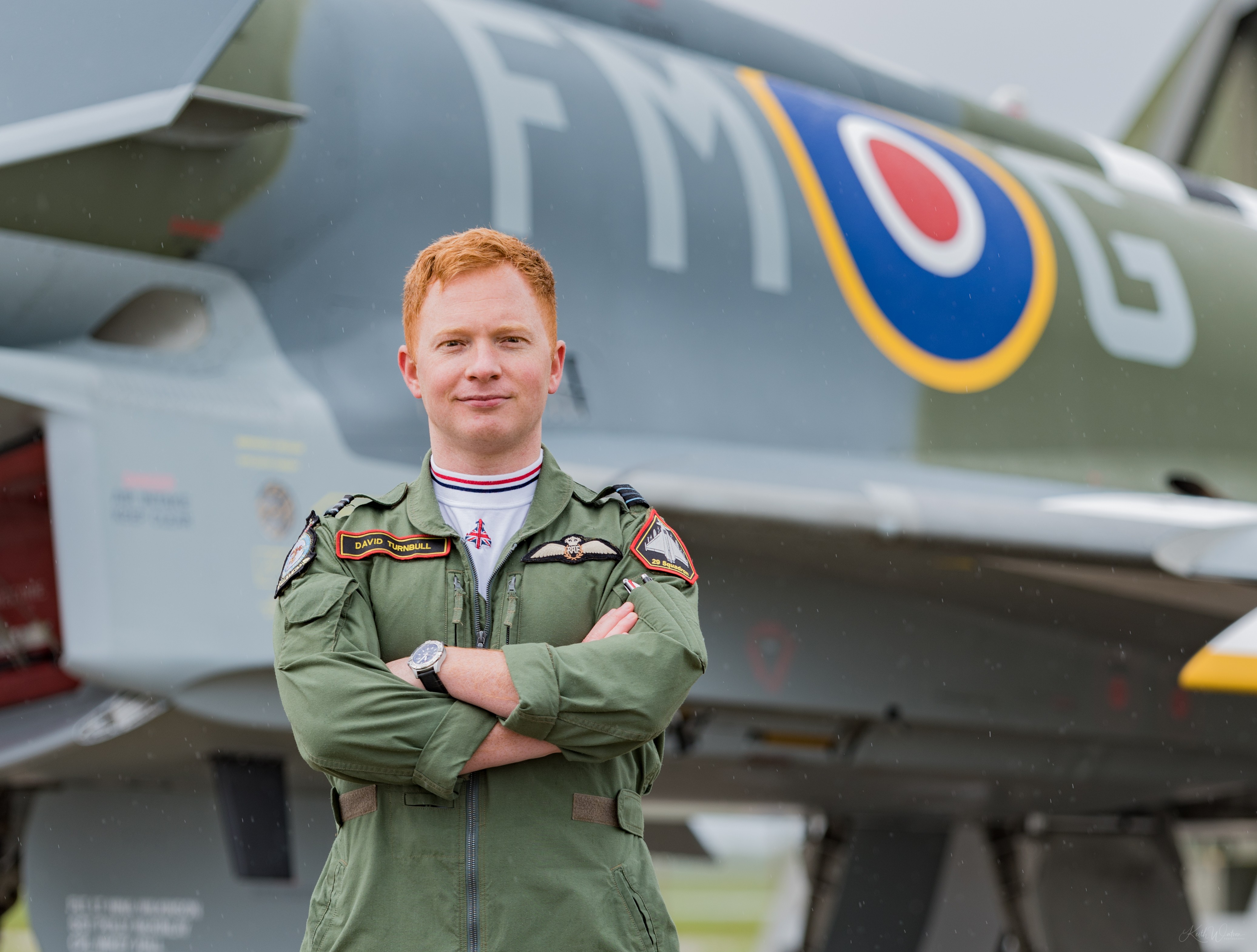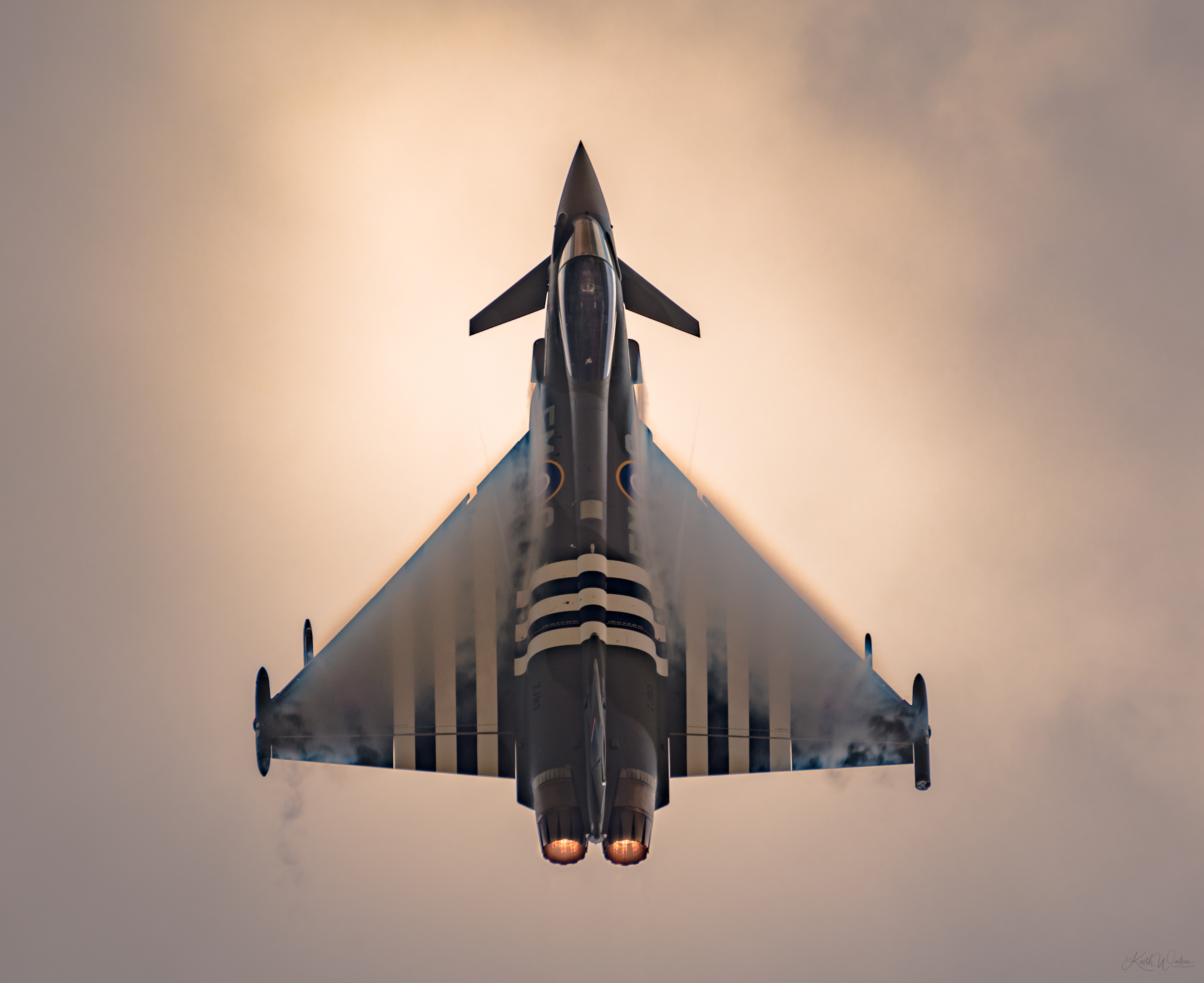What inspired you to be a pilot?
I probably decided I would like to join the military around the age of 12. I was extremely interested in an outdoor and active lifestyle which life in the forces offers.
I think I became completely set on the RAF after talking to my older brother who had joined the Army and was a member of 3 Para. I managed to sit in a Tornado GR4 (obviously on the ground!) when I was 16 years old and realised that becoming a fast jet pilot was my dream. My Tornado mates will love that part of the story.
How did your early RAF career develop?
Life in the RAF has been extremely varied, and I have achieved more than I could have imagined and made friends for life.
I completed Elementary Flying Training in the Grob Tutor after graduating from Initial Officer Training and was streamed to fast jets. I was lucky enough to hold at the Battle of Britain Memorial Flight for two seasons and loved every minute of it. A highlight was meeting many veterans during the visit to the UK of the Canadian Lancaster, Vera.
After this, I completed Basic Fast Jet Training at RAF Linton on Ouse on the Tucano and then Advanced Fast Jet Training at RAF Valley on the Hawk T2. I was lucky enough to be streamed to the beast that is Typhoon and was posted to the mighty II(AC) Sqn at RAF Lossiemouth in Scotland.
I enjoyed a great first tour that involved two deployments on Op Shader, two detachments to the Falkland Islands and exercises in Oman and Malaysia. I have been a Qualified Flying Instructor on 29 Sqn since 2021 which has been very rewarding. It is great seeing pilots we have trained go on to have a great time on the front line. Last year I had the honour of being selected as the 2024 Display Pilot and have loved it so far. The Typhoon Display Team are made up of so many highly motivated and amazing individuals so it’s an awesome place to work.

What do you think are the key attributes to being a Typhoon pilot?
A squadron needs different types of people to get the maximum benefit, but contrary to what people think the main attributes are for pilots to be honest and humble.
We fly a single-seat aircraft and that means you need to be able to trust your wingman and if someone makes a mistake, everyone needs to be able to learn those lessons and ensure they are not hidden away.
Being calm under pressure is also important and comes with training, but I have usually found that hard work and persistence are just as important as natural ability.
Do you have any memories of your first flight in Typhoon?
“This thing goes!” That is all I thought. I was lucky to make the ‘airborne’ call to Air Traffic. I am still not tired of the pure power of Typhoon’s EJ200 engines.
So what do you think of the aircraft?
The aircraft is amazing. As a within visual range fighter I believe there are very few aircraft that can compete and our amazing sensors courtesy of BAE Systems and Leonardo are truly world-leading.
With our new Striker helmet and ECRS due in this decade, I believe Typhoon is the ultimate aircraft to fly.
What attracted you to this display pilot role?
It is a dream job for me. Flying this aircraft already is a massive privilege and I feel honoured to show as many people as possible the incredible performance of this aircraft and give you a taste of what the pilots on our front lines Squadrons are dealing with every day.
Why do you think Typhoon impresses so much at air shows?
It has to be the noise. To experience the display properly, you have to be there. The engines sound incredible and when combined with the tight turn circle and amazing high and low speed handling, there is nothing better. When other aircraft are trying to gain speed to fly manoeuvres, in Typhoon you are usually trying to reign it in!

What's the aspect of the job that you buzz off the most? What do you like best out of the role that you've chosen?
My favourite part is the idea that those watching may one day join the Royal Air Force and experience some of the amazing things I have. Whether in a flying or ground role.
What are you looking forward to most in the display season?
There are many amazing events this year. We are celebrating and remembering D-Day and the sacrifices made by many from the UK and its Allies 80 years ago.
I am lucky enough to be going to Canada to help celebrate the Royal Canadian Air Force’s 100th anniversary and we are off to Sweden to welcome them to NATO. What I am most looking forward to though, is the dusk displays in the UK as I have seen them before from the ground and they are spectacular.
Is there a particular aspect of the display you have worked on?
My favourite new move is the barrel roll into a slow-speed pass. I go from 500kts to 110kts during a barrel roll and the aircraft appears to freeze. It is a chance to sit back and enjoy the occasion and then it feels unbelievable to accelerate away straight into a loop
Is display flying more physically demanding or is it more of a mental challenge?
It is both. The -3 to +9G performance takes its toll on the body, but with training and experience combined with our great flying clothing, this isn’t much of a problem. The key is to stay focused be present, and think ahead.
This mental side is all in the preparation and doing what we call ‘armchair flying’. This involves either sitting down and thinking or walking through the display and constantly challenging yourself with those ‘what if?’ questions. That way nothing can come as a surprise on the day and I am free to perform physically and mentally at my best.
Is there a particular display you’re most looking forward to visiting?
So many. I honestly don’t have a favourite, but if I had to pick right now it would be Bournemouth. A coastal display in the evening is just the best experience with two engines roaring in reheat.
